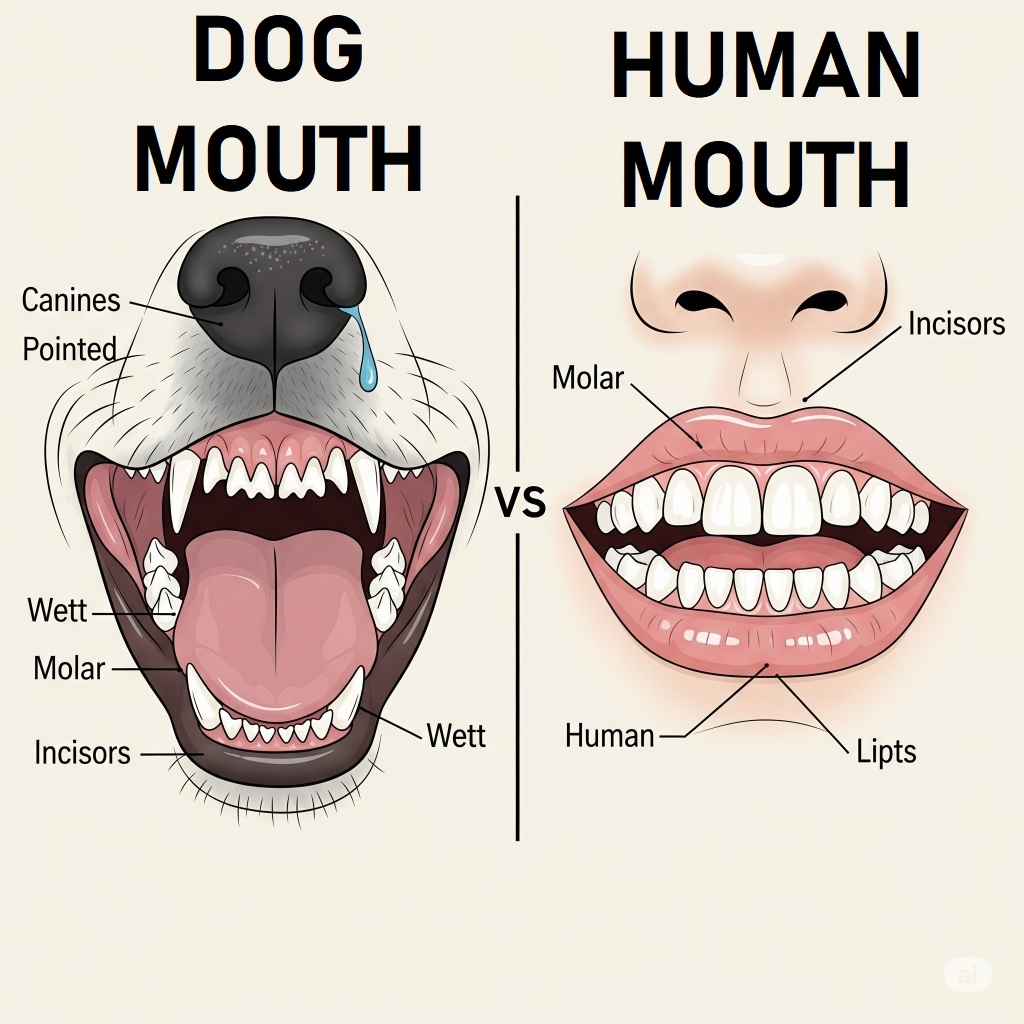It’s a common saying that a dog’s mouth is cleaner than a human’s. This popular notion often leads to misconceptions about dog hygiene and oral health. In this article, we will explore the scientific facts surrounding this belief, analyze the populations of bacteria in both species’ mouths, and consider the implications for pet ownership and health.
Post Contents
Understanding Oral Bacteria
Both dogs and humans have mouths filled with bacteria. These bacteria are a natural part of our microbiomes, which includes a diverse community of microorganisms. While some bacteria are harmful, many are actually beneficial, helping with digestion and oral health.
The Types of Bacteria
In the mouths of both species, different types of bacteria coexist. Some of these bacteria can cause dental disease, while others are involved in maintaining oral health. The primary difference between dogs and humans lies in the types and numbers of bacteria present.
Harmful Bacteria
Both humans and dogs can carry harmful bacteria in their mouths. In humans, the most well-known harmful bacteria include Streptococcus mutans, responsible for tooth decay, and Porphyromonas gingivalis, associated with gum disease. Dogs are also susceptible to oral disease and carry bacteria like Streptococcus canis.
Beneficial Bacteria
Interestingly, some of the bacteria in both species can be beneficial. These bacteria help in digesting food and preventing the overgrowth of harmful species. The balance between harmful and beneficial bacteria is essential for maintaining good oral health.
Understanding Oral Microbiomes
Oral Microbiome Definition
The oral microbiome consists of the diverse community of microorganisms, including bacteria, viruses, fungi, and other microbes residing in our mouths. This microbial community plays a crucial role in maintaining oral health and influencing overall health.
Bacterial Populations
In both dogs and humans, the mouth harbors a vast number of bacteria. A study published in Nature found that humans carry about 700 different species of bacteria in their mouths, while dogs may harbor even more, with estimates ranging from 500 to over 1,000 different species.
Bacterial Diversity
Dogs often have a different composition of bacteria due to their diet, dental care, and lifestyle. For example, dogs are more likely to ingest animal remains or other matter that may affect their oral bacterial diversity. The fungi, yeasts, and other organisms are also significant, making the canine microbiome distinct from the human one.
Are Dog Mouths Cleaner Than Human Mouths?

The Popular Myth
One of the most common myths is that a dog’s mouth is cleaner than a human’s. This notion may arise from the idea that dogs lick their wounds and have a natural ability to heal quickly. However, while dogs do have some antibacterial properties in their saliva, this doesn’t mean their mouths are devoid of harmful bacteria.
The Reality Check
In reality, dog mouths contain unique bacteria that are not necessarily harmful to them but can be dangerous to humans. For instance, the bacteria Capnocytophaga canimorsus found in dogs can lead to serious infections in people, particularly those with compromised immune systems. Therefore, it’s essential to be cautious about allowing a dog to lick wounds or open cuts.
Why Dogs Lick?
Instinctual Behavior
Dogs lick for various reasons. It can be a sign of affection, a way to communicate, or even a method of exploring their environment. Licking is a natural behavior that puppies learn early on as they interact with their mothers and littermates.
Examining the Reasons Behind Licking
- Affection and Bonding: Dogs often lick their owners as a form of greeting or show of affection. This behavior helps strengthen the bond between the dog and its owner.
- Exploration: Dogs use their mouths to explore the world around them. Just like humans might touch things to understand them better, dogs lick to gather information.
- Self-soothing: Licking can also be a self-soothing mechanism for dogs. Similar to how humans might bite their nails when anxious, dogs may lick their paws or other parts of their bodies to calm down.
Dog Saliva: Special Properties
Antibacterial Qualities
Dog saliva does have some antibacterial properties, which can aid in wound healing. Components of their saliva, including lysozymes and immunoglobulins, help fight infections. This is why dogs sometimes lick their wounds. However, while this can help in certain situations, it’s not a substitute for proper medical care.
Healing Abilities
Studies have shown that dog saliva can promote faster healing of wounds. However, this doesn’t mean that letting them lick is always beneficial. The exposure to bacteria from their environment can introduce new pathogens that might complicate recovery.
Comparing Dog and Human Mouths
Bacterial Diversity
When comparing the bacterial diversity in dog and human mouths, several differences stand out. Humans typically have a broader range of bacterial species due to their varied diets and living conditions. In contrast, dogs have a more specialized set of bacteria that reflect their carnivorous diet.
Dental Health
In terms of dental health, humans often face more challenges, including cavities and gum disease. This is largely due to dietary habits, sugar consumption, and lack of regular dental hygiene. Dogs, while also at risk for dental issues, usually experience different types of dental diseases, like periodontal disease, which are more common in older dogs.
The Importance of Oral Hygiene for Both Dogs and Humans
Dog Oral Care
Taking care of your dog’s oral hygiene is crucial for their overall health. Regular dental check-ups, teeth brushing, and providing dental chews can help maintain their mouth health. Here are some best practices:
- Regular Brushing: Just like humans, dogs benefit from regular teeth brushing. It helps to prevent plaque buildup and dental diseases.
- Dental Treats: Giving dogs dental chews can help reduce tartar and keep their teeth clean.
- Routine Vet Visits: Regular dental check-ups at the vet ensure any potential issues are addressed promptly.
Human Oral Care
Humans must also maintain good oral hygiene to prevent various health issues. Basic oral care practices include:
- Brushing and Flossing: Regular brushing and flossing are essential for removing plaque and preventing gum disease.
- Routine Check-ups: Regular visits to the dentist help catch issues early and maintain overall oral health.
Conclusions and Takeaways
- Caution is Key: While dogs may have some natural antibacterial qualities in their saliva, it doesn’t make their mouths cleaner than human mouths. Both species harbor bacteria that can be harmful.
- Hygiene Matters: Proper oral hygiene is essential for both dogs and humans. Maintaining regular dental care can prevent many health issues in both.
- The Myth Persists: The idea that a dog’s mouth is cleaner than a human’s is largely a myth. Awareness of the bacteria present in both species can help people make informed decisions about pet interactions.
In conclusion, while dogs may have certain advantages in their oral hygiene due to their saliva’s properties, it’s essential not to overlook the potential risks associated with dog mouths. Understanding the differences in oral health between dogs and humans leads to better care practices for our beloved pets and ensures our health is protected as well.

94% of pet owners say their animal pal makes them smile more than once a day. In 2007, I realized that I was made for saving Animals. My father is a Vet, and I think every pet deserves one. I started this blog, “InPetCare”, in 2019 with my father to enlighten a wider audience.
